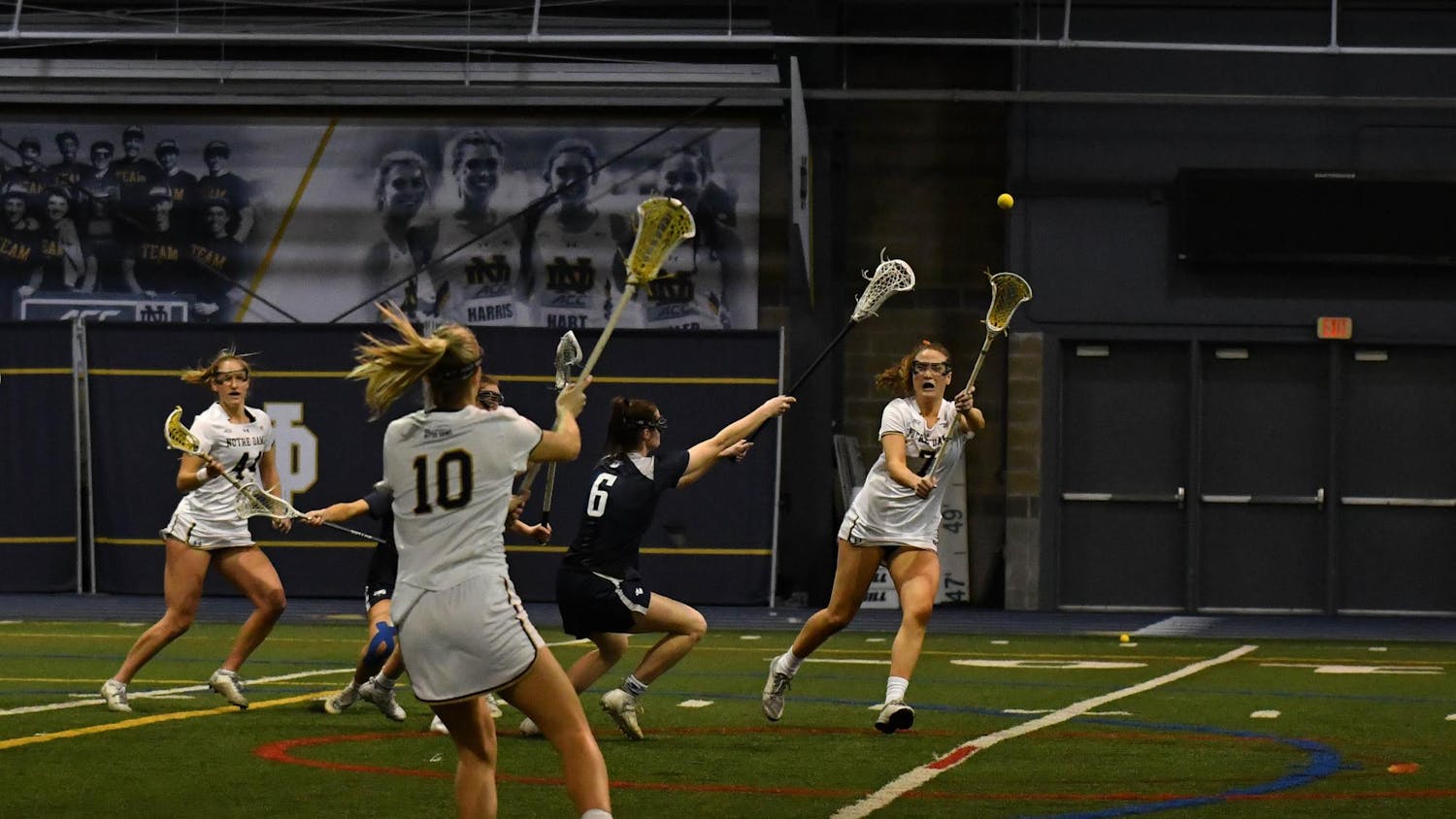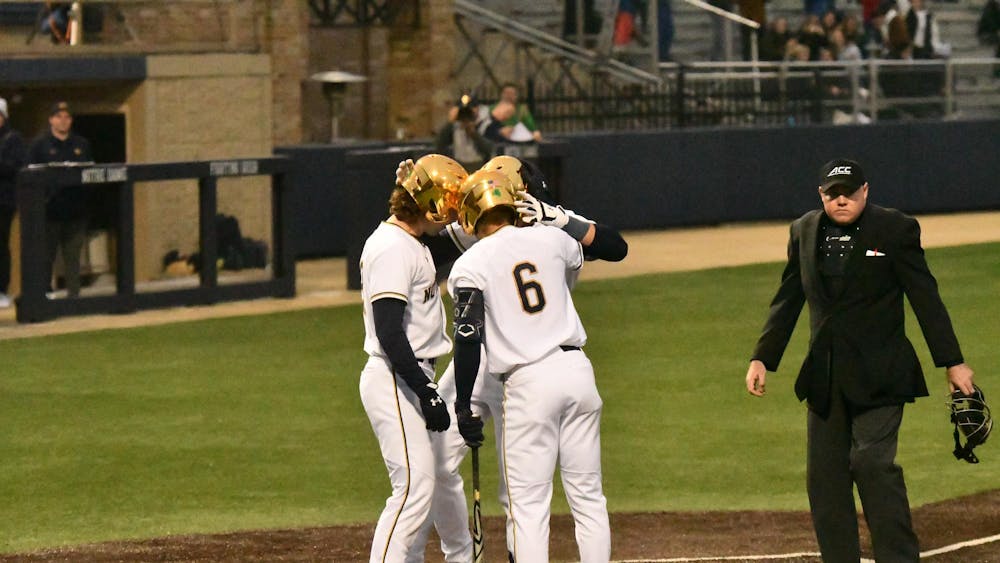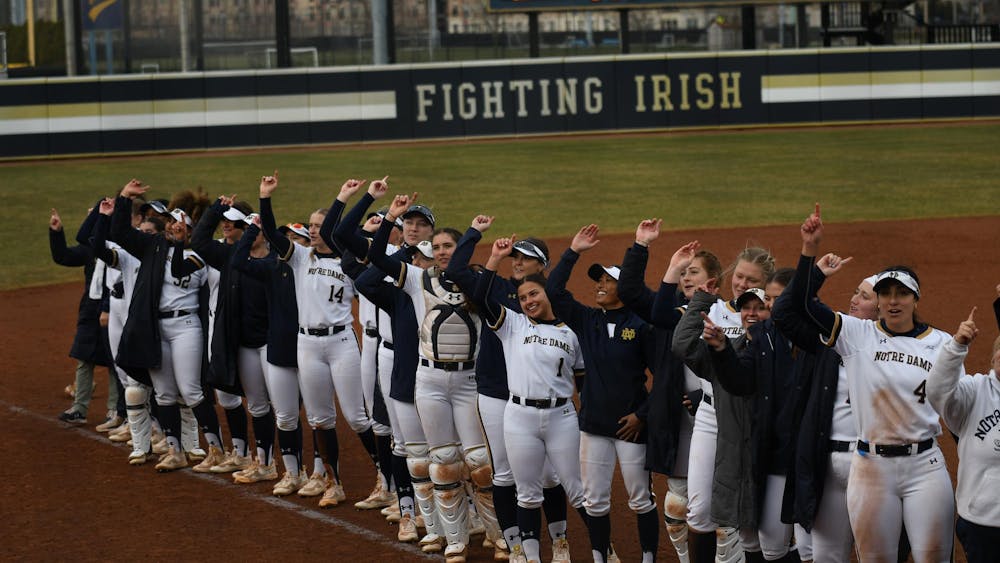For someone who repeatedly invokes the terms mythology, history and tradition to recount his football past, it’s fitting for Ross Browner to describe his playing style in similar terms — as a gladiator.
“That’s what I always thought of it as, just being a destroyer and go in there as a gladiator, just really approaching the game where I have to be the conqueror, or I have to be the victor in this whole fight against offensive and defensive linemen and this battle against our opponent,” the former Irish star defensive lineman said recently by phone. “I went in with a total mentality of going in and be a destroyer of offenses.”
Browner took pleasure in trying to outthink opposing coaches, using angles and geometry in conjunction with his natural size and strength to stymie offenses. Browner, of course, did plenty of that in his Notre Dame career. A two-time consensus All-American (1976 and 1977), Browner claimed the Outland and Lombardi trophies and even finished fifth in the Heisman Trophy voting in 1977. He won two national championships with the Irish — in his first (1973) and last (1977) seasons.
Listed at a lean 6-foot-3, 240 pounds during his playing days, Browner started sculpting the physique to be a top-notch defensive end even before he seriously began playing football. Browner credited his time involved with swimming and diving and track with priming himself for the football days that would follow.
He began playing football around eighth grade growing up in Warren, Ohio, in the northeast part of the state. Before that, Browner said, the focus had really been on swimming and diving.
“[Football] just got to be a routine and then all of a sudden it became a passion,” Browner said.
Browner attended the up-and-coming Warren Western Reserve high school on the west side of the city — closely opposed to Warren G. Harding High School and the John F. Kennedy Catholic School.
“We started building a tradition,” Browner said. “We started playing tough football on the West side of town.”
Part of a group of about 10 teammates, Browner and his cohorts crafted a structured routine of lifting and running together.
“We just pushed each other. We just developed and before we knew it, we were winning a lot of games,” Browner said with his customary hearty laugh.
Browner’s high-school success attracted plenty of attention from colleges, as about 40 schools recruited him.
“There was just one thing that stuck out in my mind, and that was when I hit Notre Dame,” Browner said of his recruiting process. “There was just a mythology, a tradition, a history.”
Browner grew up listening to esteemed broadcaster Lindsey Nelson calling Irish football games, and he remembers watching quarterback Joe Theismann in action. So, naturally, visiting campus was “just one of my fantasies,” Browner said.
He met Moose Krause, Fr. Edmund “Ned” Joyce and Fr. Theodore Hesburgh. Browner also met Notre Dame’s “father of football,” as he called him, head coach Ara Parseghian. Browner had mostly been recruited by assistant coaches Joe Yonto, Mike Stock and Greg Blache. But on his visit to campus, Browner sat down with Parseghian in the head coach’s office.
Parseghian told Browner they really wanted him to play tight end, though defensive end was certainly an offense.
“I said, ‘Coach, coach, coach. I really like tight end but I think I can be more effective on the defensive side, at defensive end,’” Browner recalled telling Parseghian.
The head coach willingly and happily obliged.
“He charmed me, made me feel good,” said Browner, who said he would have loved to have been a “kamikaze” on kickoff coverage if not a defensive end.
Browner then walked into Notre Dame Stadium for the first time.
“It was like an aura that hit me,” Browner said.
Stadium workers glorified the crowd’s passion on game days, and Notre Dame’s fight song “got my blood stirring,” Browner said. Further attracted by the education and religious components, Browner embarked on his career at Notre Dame — the first of three Browner brothers to play football at Notre Dame, while the next two starred at USC.
In the spring of his final year on campus, Browner was readying for the NFL. On the day of the draft, Browner was in class finishing up his last assignments. Walking out of class on the south side of campus, a teammate ran up to Browner and told him he had been selected by the Cincinnati Bengals in the first round. Browner made the long trek to Flanner Hall and heard the news himself from Bengals team president Paul Brown over the phone.
Browner played for the Bengals from 1978 through 1986, with teammates such as Ken Anderson, Archie Griffin and Isaac Curtis.
“To be able to play with those guys side by side playing in the NFL was a joy itself,” Browner said.
In 1982, Browner took part in what he called “the most magnificent game I’ve ever played in my life” — Super Bowl XVI against former Irish quarterback Joe Montana and the San Francisco 49ers in Michigan. Montana led his squad to victory and was named the game’s MVP.
“If I had to lose to anybody, I’m just happy to lose to you, buddy,” Browner said he told Montana after the game.
Twenty-four years later, Browner’s son, Max Starks, started for the Pittsburgh Steelers in Michigan, as well, in Super Bowl XL in February 2006. Browner’s other son, Rylan Browner, played at Arizona, and Browner’s nephew, Keith Browner Jr., played at Cal and has been on the Houston Texans’ practice squad.
Browner said when his family is not talking about its common sport, politics and business ventures drive the discussion. Browner himself has an extensive work timeline, having worked in real estate, sports entertainment, the cleaning industry, insurance, mortgages and business development. Browner, 60, who now lives in Nashville, Tennessee, is back into real estate.
“I like being intrigued, I like doing different things all the time,” Browner said. “Real estate is what I really, really love, because I like owning a piece of the rock.”
On March 16, 2013, Browner made the decision to have his left foot amputated after 13-years worth of foot pain from an ulcer took its toll.
“I wanted to be around to see my kids grow up and my grandchildren, so I want to be around,” Browner said.
Nearly 20 months removed from the operation, Browner is all smiles.
“Everything is going exceptionally, great healing, health is very much coming around, just really blessed,” Browner said. “I always keep God in my life. Keep God first and then work on it from there.”













